March 2019 Edition
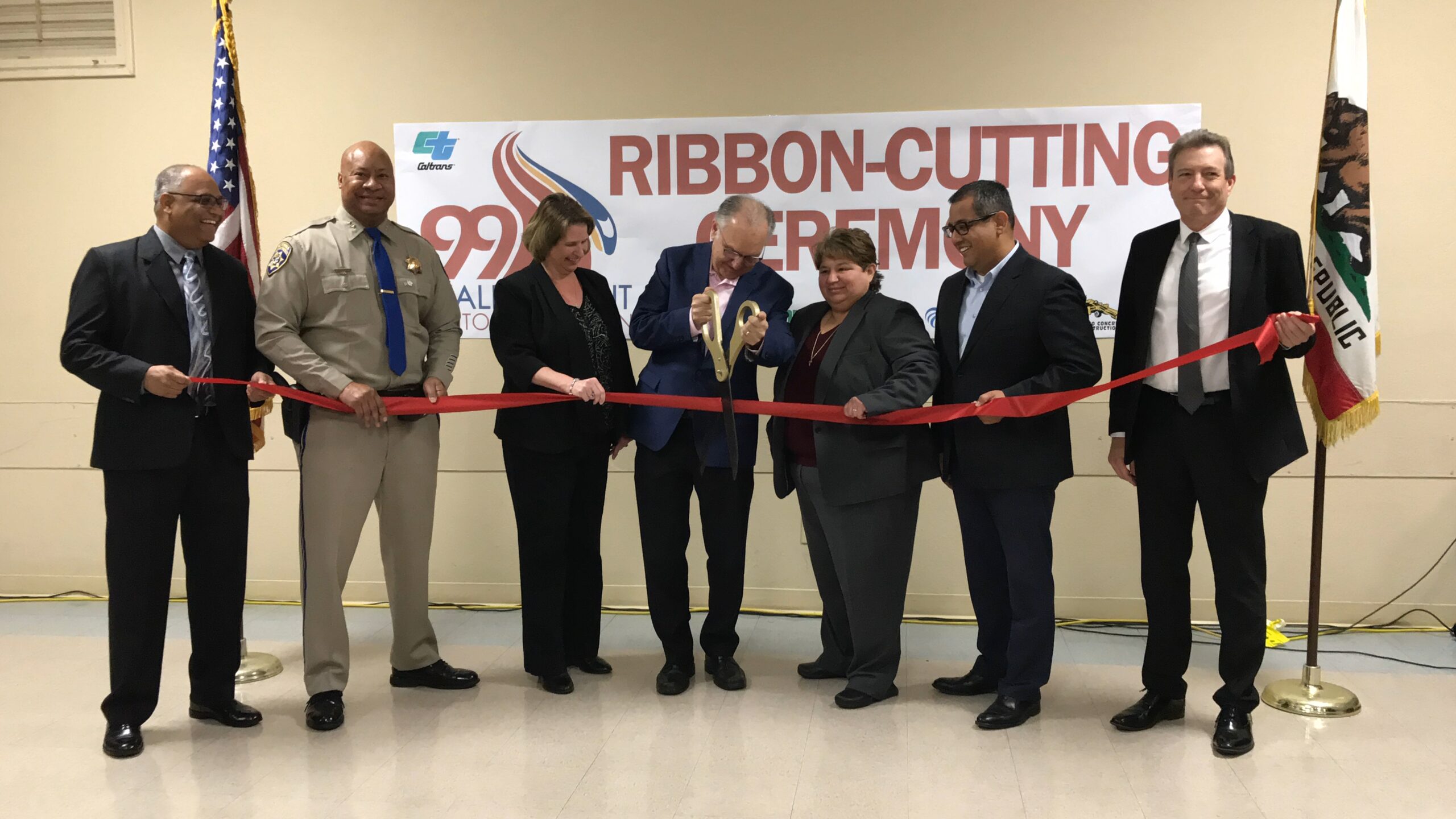
“Enough can’t be said about what it took to get a project of this scope and size completed,” said Caltrans Director Laurie Berman. “This is an amazing achievement for District 6 and High-Speed Rail. It’s also a sign of good things to come.”
At $290 million, this project is the biggest in the history of District 6. Along with the relocation of the highway, three overcrossings were demolished and completely reconstructed to accommodate the height and width requirements of the high-speed train. The realignment is part of the high-speed rail corridor of projects within the Merced to Fresno project section.
“The completion of this project marks a major milestone in constructing the high-speed rail project through the Central Valley,” said Central Regional Director Diana Gomez. “Through our partnership with Caltrans, not only were infrastructure updates made, but hundreds of jobs were created.
Several improvements were made to the corridor as well, including the addition of three through lanes and an auxiliary for each direction of travel. Also, three at-grade onramps were permanently closed to improve traffic flow and overall safety on the heavily-traveled thoroughfare.
“This was a huge undertaking with a lot of moving parts and I’m proud of what we were able to accomplish with minimal disruption to mainline traffic,” said Caltrans District Director Sharri Bender Ehlert. “It’s a real testament to the partnership between Caltrans, High-Speed Rail and the City of Fresno.”
Updates Per Project
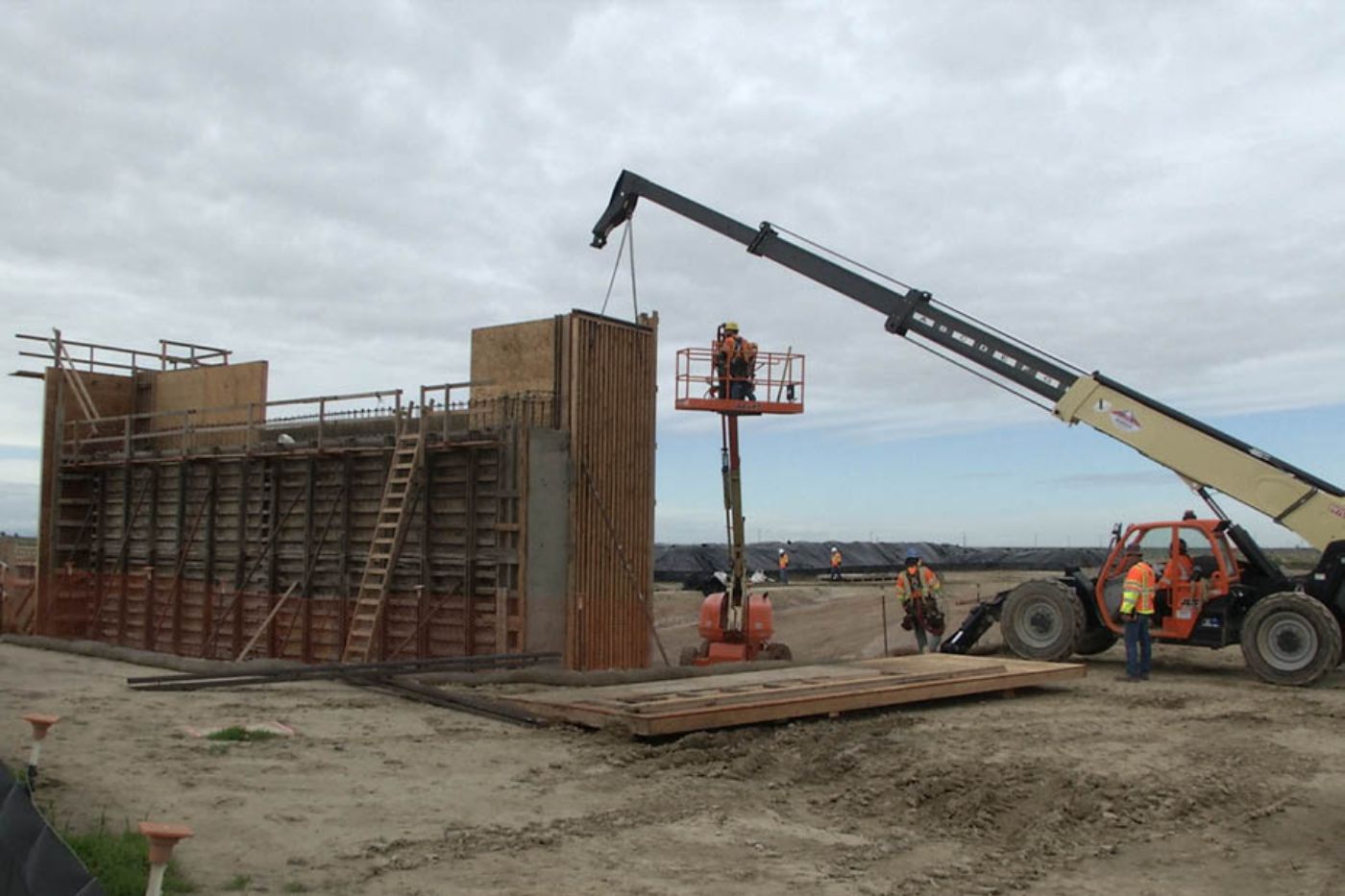
Garces Highway
Work gets underway on abutments at what will be a high-speed rail crossing over Garces Highway, just outside the town of Wasco in Kern County. A concrete pump truck pumps concrete into the rebar filled forms. Workers direct the flow to where it needs to be to ensure coverage and also insert a vibrator into the poured concrete to eliminate air pockets.
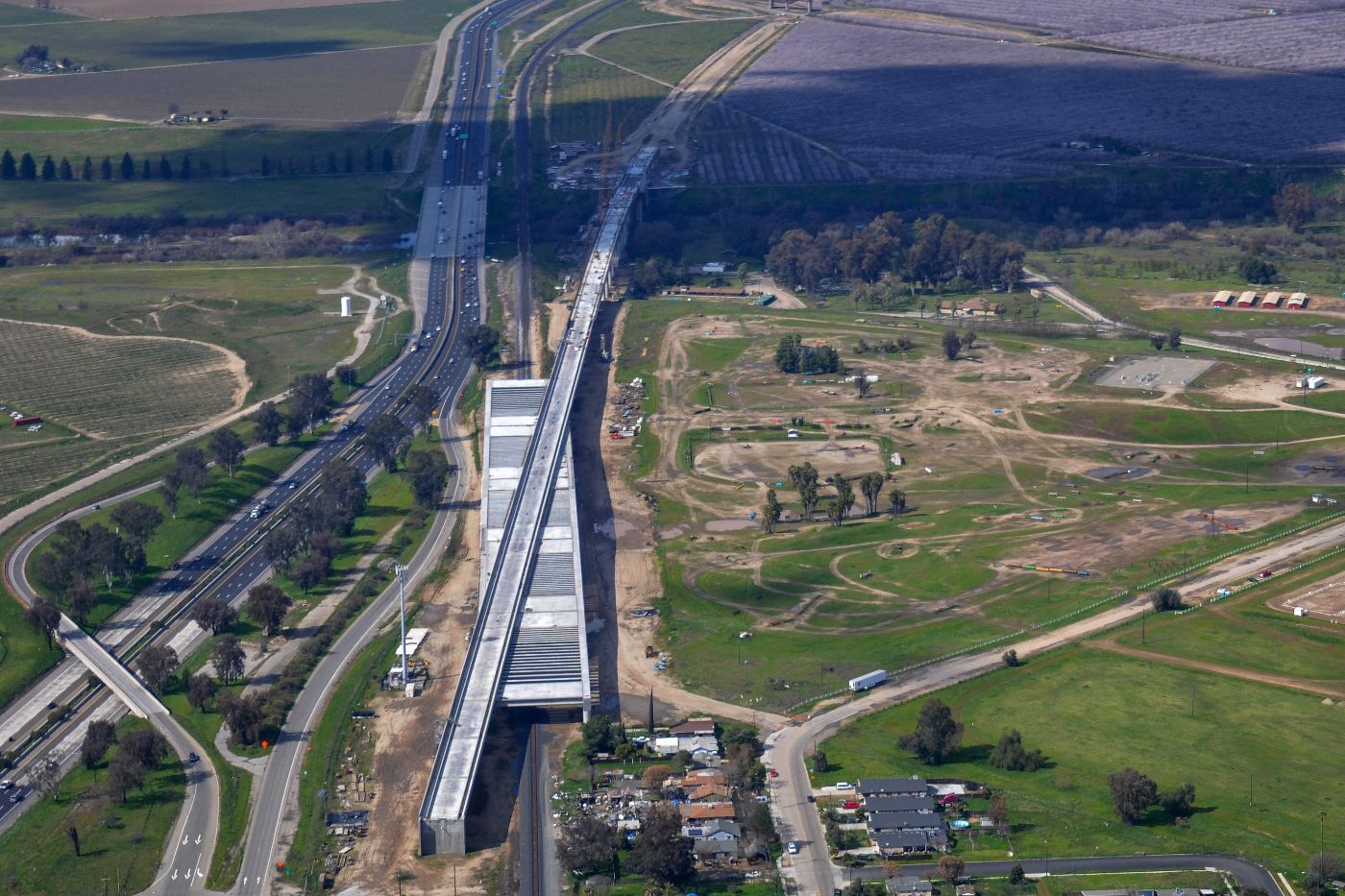
San Joquin River Viaduct
At the San Joaquin River Viaduct, foundations have been poured for a cast-in-place concrete arch that will act as the high-speed rail gateway to Fresno County. Other sections of the viaduct continue to be constructed on the north and south banks of the San Joaquin River. Crews are installing metal decking over the river, concrete super structure elements are being poured to the south of the river, and deck drainage is being installed on completed sections.
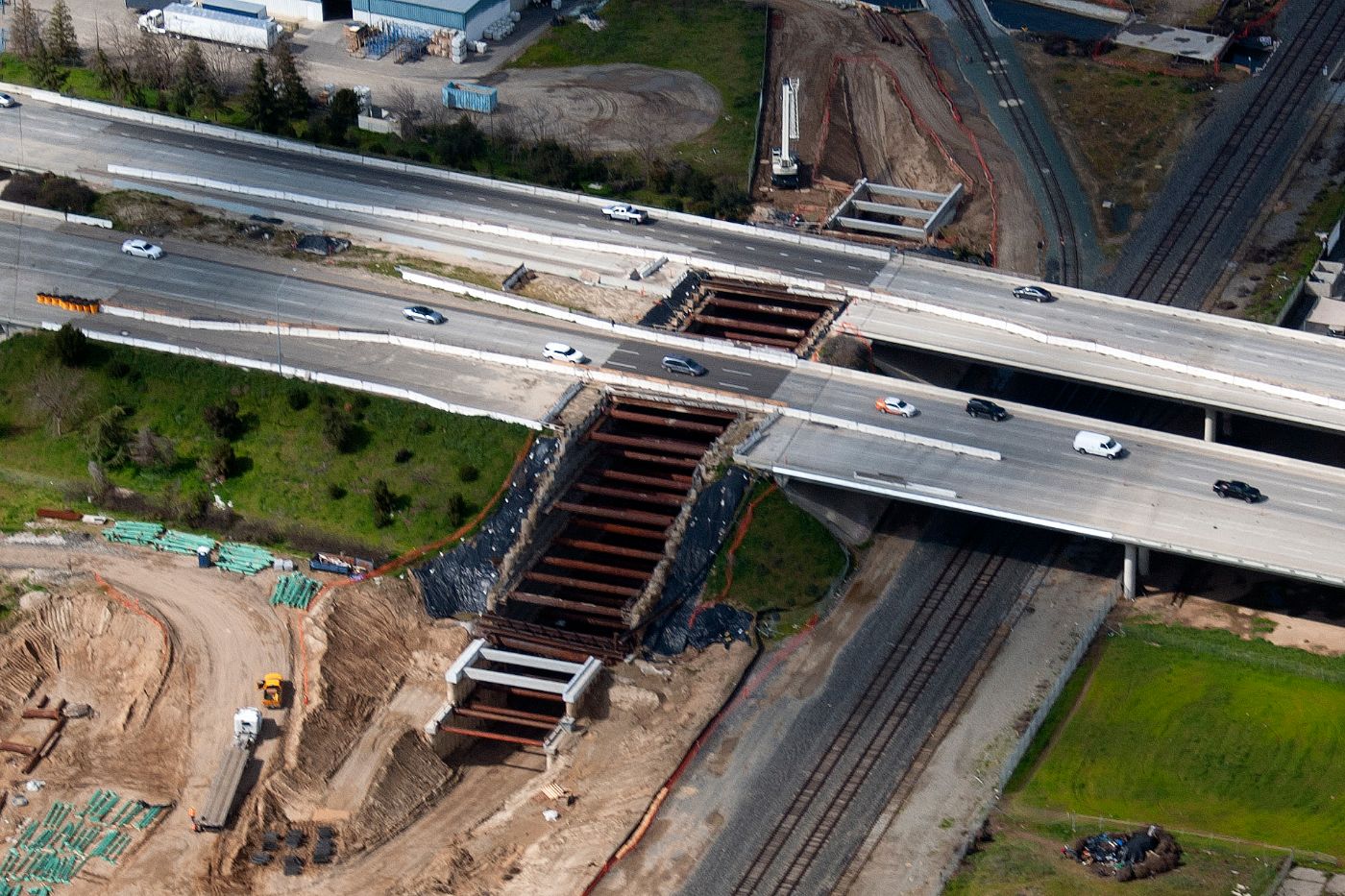
Fresno Trench & SR 180 Passageway
A little north of downtown Fresno, workers on the State Route 180 trench are putting the finishing touches on the walls inside the undercrossing, while others excavate the area outside where the trains will start to come back to grade. Work has slowed due to the wet winter weather, but is about to begin construction on the “floor” of the concrete box that will carry trains under the highway, a rail spur and the Dry Creek Canal. Ultimately, the trench will extend approximately 1 mile in length.
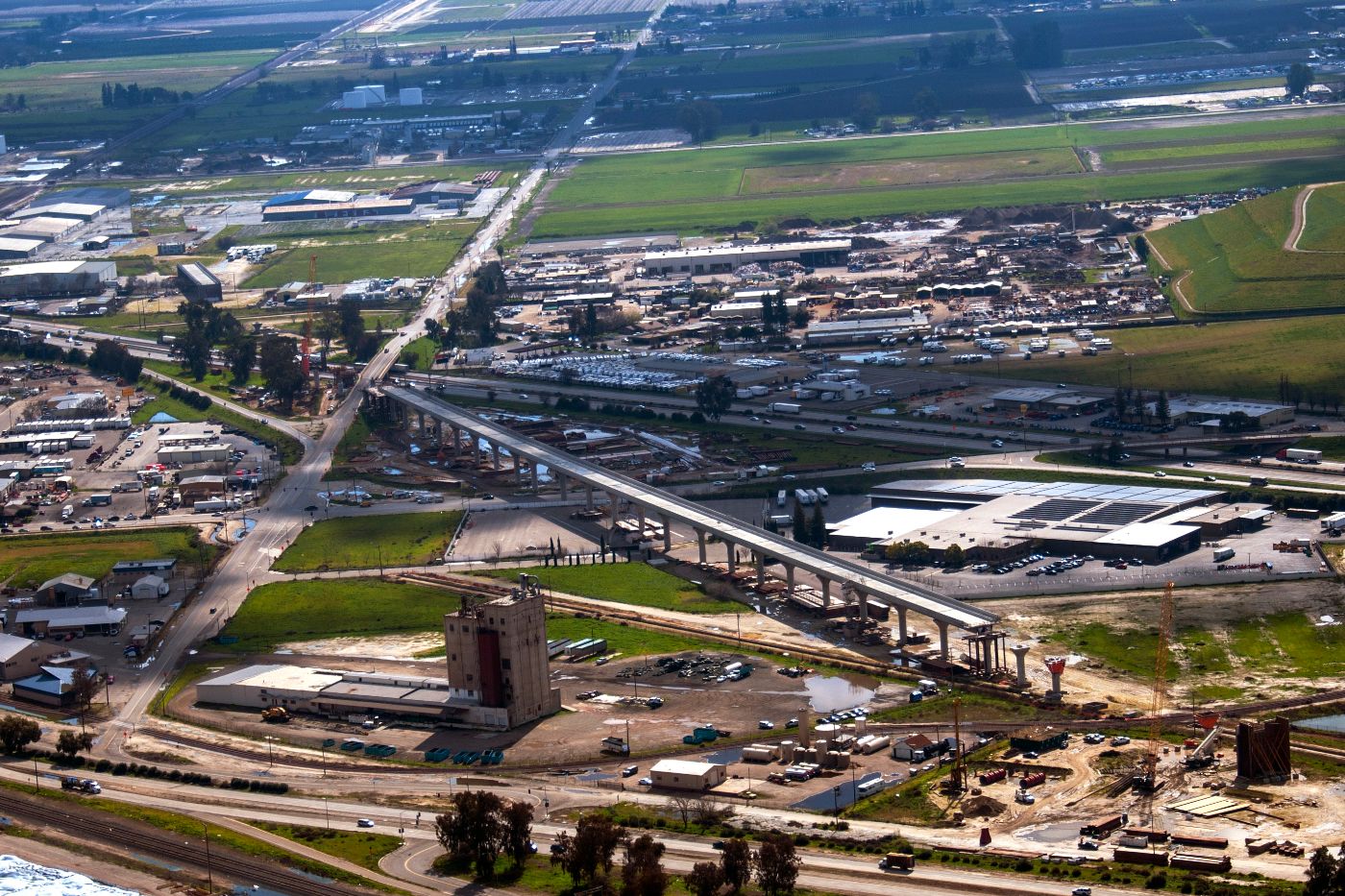
Cedar Viaduct
At the Cedar Viaduct, construction crews continue extending the structure across State Route 99 south of Fresno. Columns for support piers are rising on both sides of the highway and in the median. Construction crews are now building the flared pier caps that will hold up the viaduct deck and extending the falsework from the already completed section. The viaduct will eventually be connected to the smaller Muscat Viaduct a little further to the south.
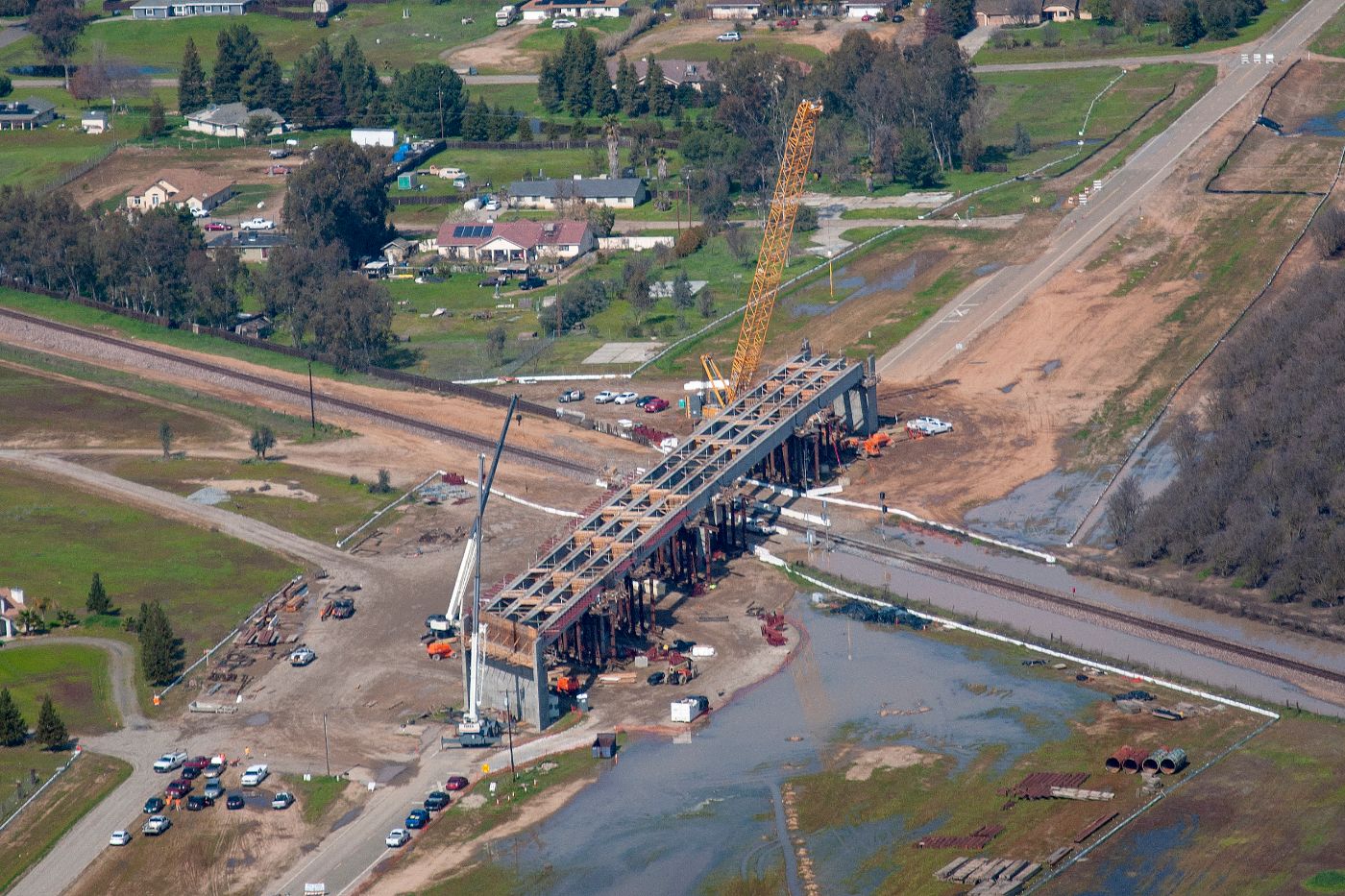
Road 27 Grade Separation
At the northern end of Construction Package 1, crews have begun pouring concrete for diaphragms, which are the structures that connect the girders along the sides to stabilize the superstructure. Also, crews are pouring the closure pours, which will connect the girder sections end to end. This structure is a spliced girder bridge which is unique to the area and was necessary to elongate the spans due to the existing road geometry. Ultimately, the bridge will be nearly 650 feet long with frontage roads providing access to local homes along the sides.
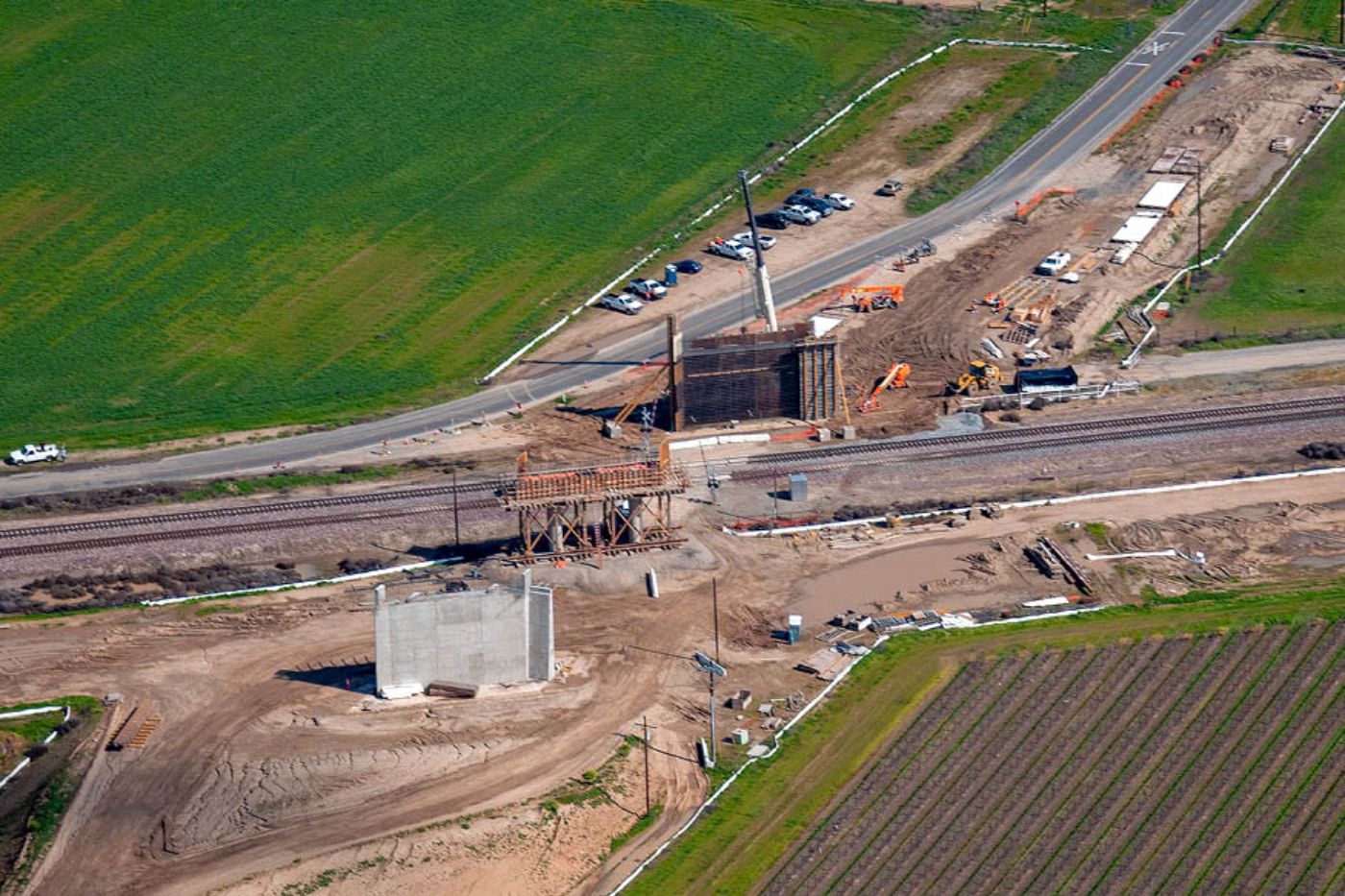
Avenue 15 Grade Separation
At Avenue 15, construction is underway on both sides of the tracks as workers complete the central pier and start work on the eastern abutment. Workers have poured the bent cap, which ties the two columns together, and are removing the temporary falsework that supported the concrete forms. The 35-foot-tall west abutment was poured earlier this month and the forms have been stripped and moved to the east side where that abutment is now taking shape. After the eastern abutment is poured, girders will be set for the two-span structure which will take traffic over the future high-speed train and the existing BNSF freight rail alignment.
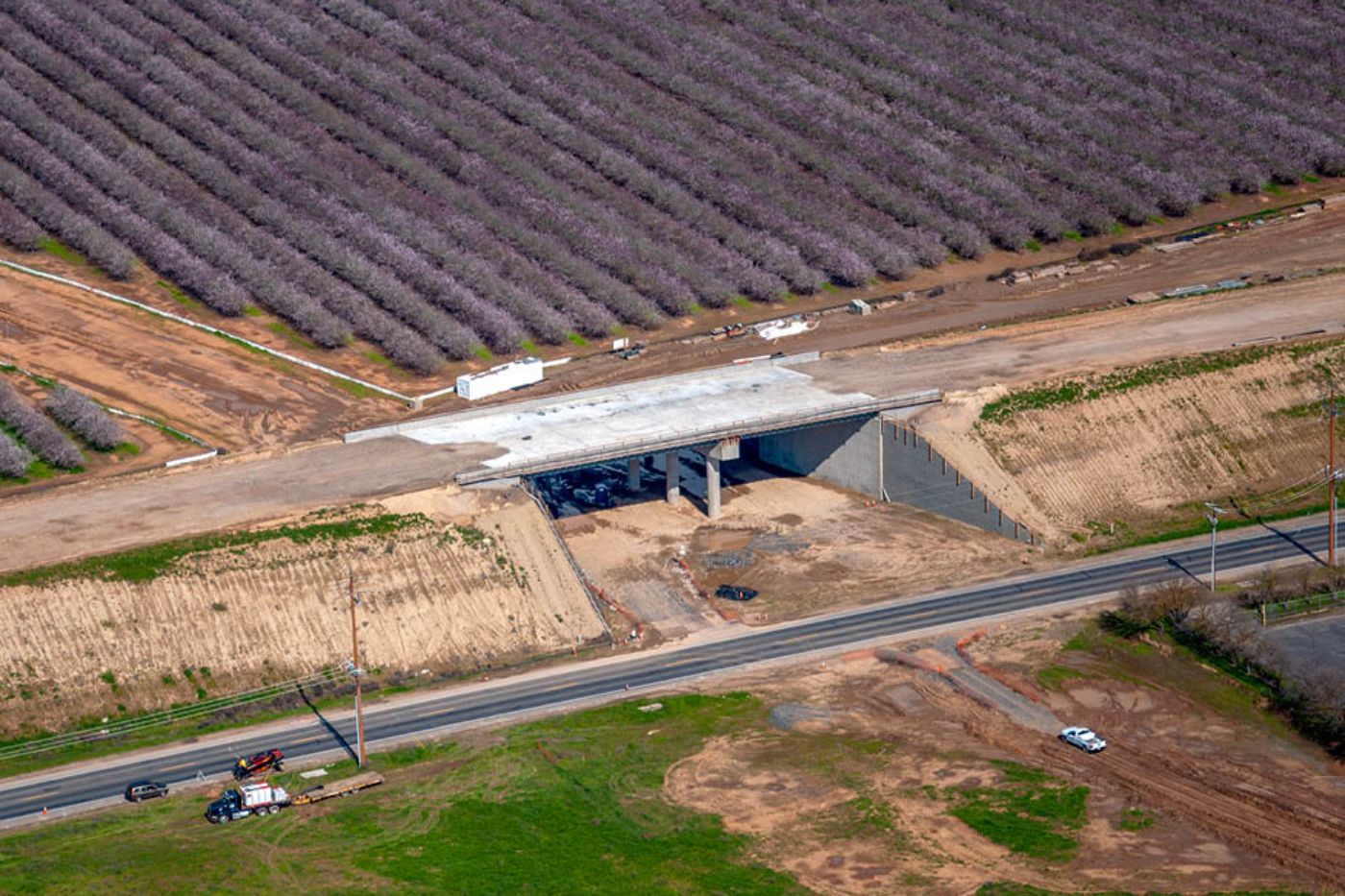
Avenue 12 Grade Separation
A little east of Madera Community College, crews have poured the concrete deck and barrier walls along the sides of the Avenue 12 high-speed rail overcrossing. Walls adjacent to the Avenue 12 overpass are also being constructed. The recent rains slowed down the progress of the footings, but walls are starting to be formed on the west side of the tracks. The realignment of the busy roadway with two separate bridges will take traffic over the high-speed rail line and the BNSF freight tracks a little further east.
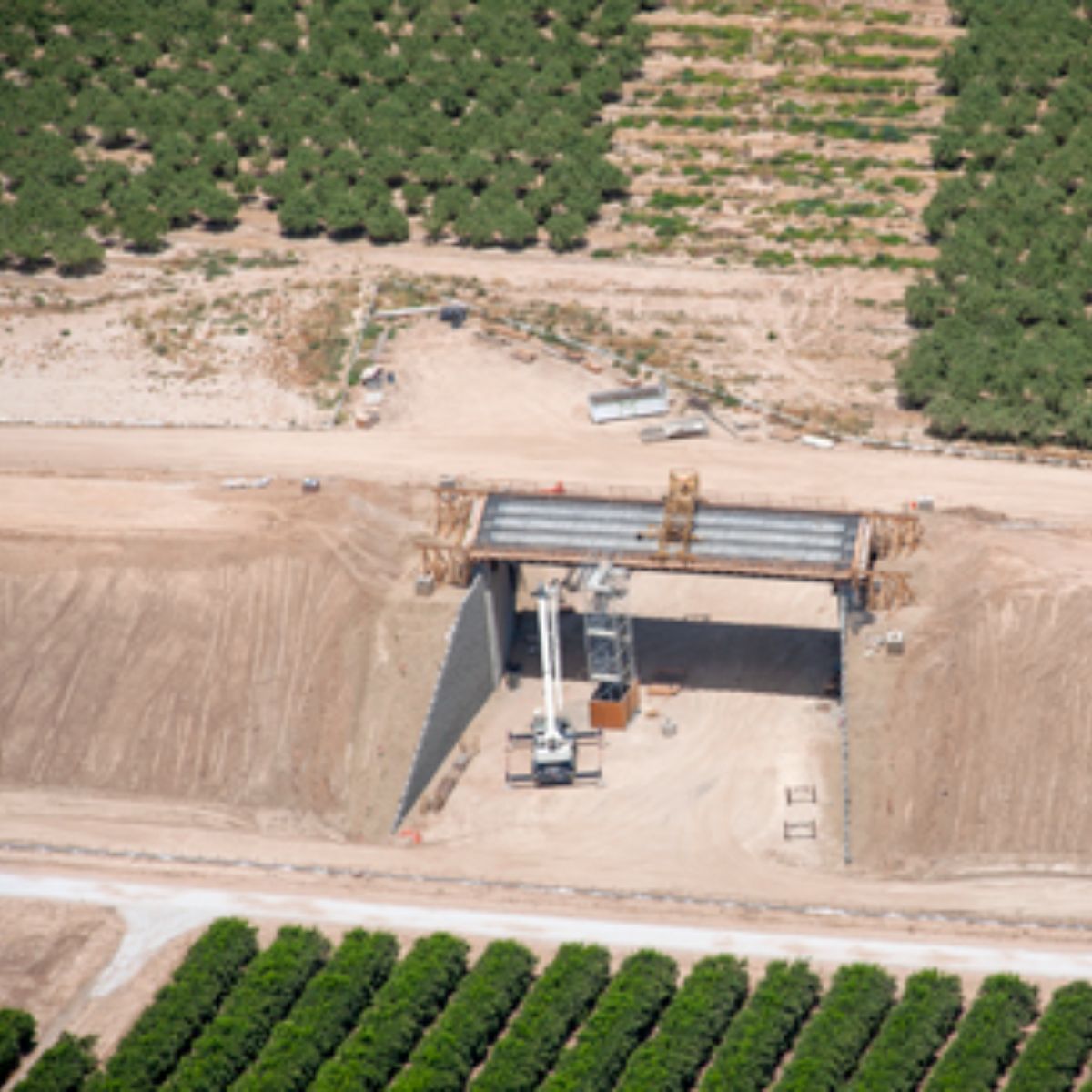
Avenue 11 Grade Separation
Recent cold temperatures and rain have held up final asphalt paving for the roadway leading up to the bridge at Avenue 11. While they wait for warmer paving weather, crews have begun working on the area under the bridge.
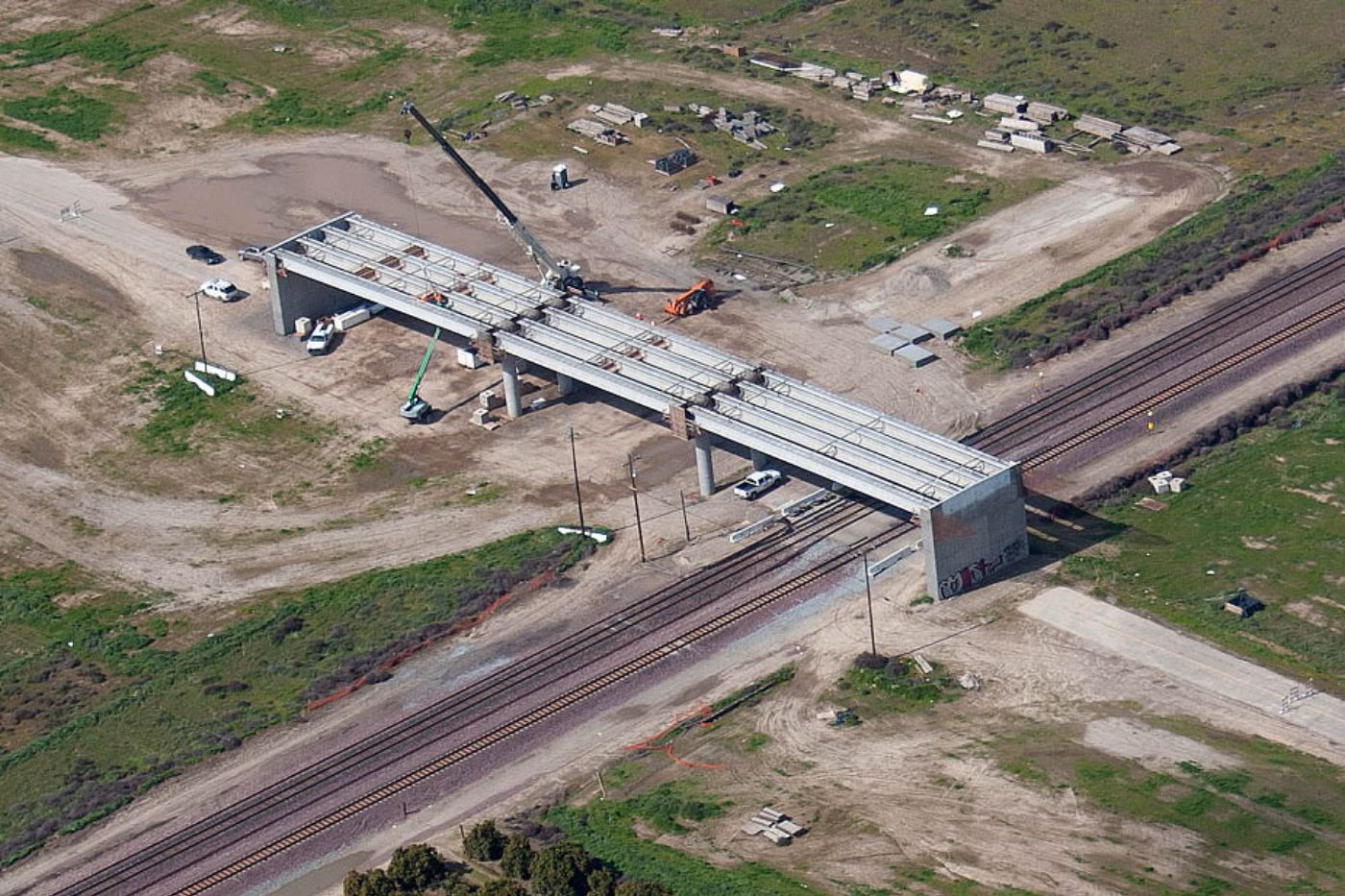
American Avenue Grade Separation
Crews at American Avenue, the southern end of Construction Package 1, have begun constructing the diaphragms to stabilize the bridge superstructure. Once the diaphragms have been completed the next step will be to install steel deck panels to create a foundation for the crossing’s deck.